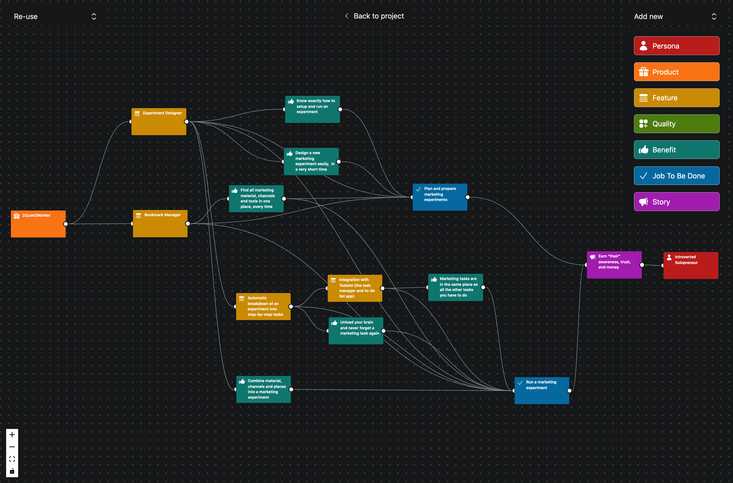Never Run Out of Marketing Energy as a Solopreneur with This Basic Structure
Define 4 buckets: places, channels, material, and tools. Then, use these buckets whenever you search for the things you need to execute the next marketing experiment. Having structure and processes for your marketing works wonders to help you "keep at it".
Published:

The problem: No energy for marketing 😳
The day for marketing work has come, and you've got no energy to get started? One possible reason is that it simply takes you too much time to get "into the flow" because your marketing lacks structure.
In this episode, I'll show you 4 different buckets to get your marketing sorted, so that when Marketing Day comes, you're up and running in no time!
The cause: Winging it every time, without a structure!
If you're anything like me, it takes your brain too many calories to answer these basic questions:
- What do I want to write/tweet/film about, today?
- Where does my audience hang out, so I can see their questions and write answers?
- Where do I publish it this time? Blog? Social media? Newsletter? YouTube?
- Where is my marketing material, e.g. my photos, text snippets, or videos?
- Where are my tools that I typically use?
In a previous issue, I wrote about How to Create a Content Plan, so You Always Know What Content to Publish, so the first question should already be answered: It's in your content plan! ✅
But the other 4 questions need answers, too! That's why I use a simple system with 4 buckets where I put my marketing stuff so that I always have it handy.
These 4 buckets are
- Places
- Channels
- Material
- Tools
Have clarity about those 4, and you're good to go: Watch people who gather in places, create a story about how they can solve the problem they talk about, and use a channel to reach those people right where they are. Enrich your story with some material and use the right tools to tell it.
I create bookmarks for each place, channel, material and tool. Here I'll show you how I use them in my weekly workflow.
Places: Find the people
If marketing and sales were a photo safari in Africa, you would rather visit the "watering holes" where the wild animals come to drink. My places are Indie Hackers, Product Hunt, Hacker News, Reddit – any place where solopreneurs hang out and talk about their marketing problems.

Recently, I wrote an answer to Andrew Stuart on his Indie Hackers post I think my product is awesome but promotion feels awkward and futile:
You don't need to build an audience. Go to where your audience already hangs out. No need to build a Twitter or LinkedIn following. You only need a group of people who have a problem that you can and want to solve.
This group need not be your following, it can be anybody's following. Or it can be a group on a social network (e.g. a LinkedIn group).
Anyway, they only need to be visible, understandable, reachable and addressable by what you have to say. No need to build that group first, find an existing bunch of people who satisfy those criteria, and you're good to go, at least when you see them talk about a confirmed problem.
You don't need to shout from a mountain. Your marketing doesn't need to tell people about how good your product is. (This was a biggie for me, I am a "non-bragger", a modest person). You only need to tell people about how well you understand their problem, and how awesome their lives will be, once they solved their problem using your product.
Channels: Write and repurpose
This is what works for me: I blog first, then I repurpose what I wrote, on email and social media. Writing the blog helps me clarify my thoughts and express myself clearly. I always start with a short post that will take a visitor no more than 5 minutes to consume. At a reading speed of 250 words per minute, it means that the post needs to be around 1250 words long.
Every blog post I write needs to start with a problem or premise, followed by a promise about what the reader will learn. Next, there are several value sections, each one with an interesting headline so the reader can quickly skim them to see whether they want to read the entire piece or not. At the end, every post needs a call to action so that my readers will do the most important first step that I want them to do.

You can publish your story online on various channels. I repurpose a blog post in 5 different channels:
- on ConvertKit as a newsletter
- on Medium as an article
- on Substack as a post and newsletter
- on Transistor as a podcast
- on YouTube as a video
Start small. Don't try to do this all at once. Get one channel working, then add another and another.
Material: Make it interesting
Depending on the channel, you need some material to make your message interesting and beautiful. For a blog post, you might need images. For videos, you need stock footage, still images, sound effects or music. For a podcast, you may need music as well.
I get my images from Depositphotos and from Unsplash. You can find stock footage for videos on Pexels. And finally, Epidemic Sound is a great site to get good music for your videos and podcasts.
As an example, here's a great photo by Giulio Magnifico on Unsplash:

Tools: Get that story out
Filling a blank page with a complete story is difficult. Therefore, I write an outline with several subheadings first. Then I fill the white space between the subheadings. To get the first headlines and the sentences in between, I use 2Quiet2Market.com. It helps you position your product correctly, compose the basic story structure and write 3 interesting sentences per section. It even connects to GPT to spice up my rather bland and factual copy.

Once I get the blog post out, my static site generator adds it to the blog's RSS feed. I use Substack to consume that RSS feed and turn each blog post into a newsletter. I also copy the blog post into ConvertKit and add it to the weekly newsletter sequence. Finally, I use a short piece of JavaScript that takes the Markdown file of the blog post and publishes it as a draft on Medium. I finish that draft manually, adding images and some formatting, and hit "publish" at the end.
Finally, I take the same blog post and use it as a script for my next video for the Reluctant Marketer channel on YouTube. My preferred video editing tool is DaVinci Resolve by Blackmagic Design. Most of its features are already contained in the free version. Awesome!

As I said: Start small. Don't try to do this all at once. Get one channel working, then add another and another.
Get help to create your own marketing buckets
You'll never run out of energy for marketing now, because with that 4-bucket structure you'll be ready and up to speed every time. My tool 2Quiet2Market supports this structure natively, and you can create your own structures as well.
If you're a solopreneur, you will find 2Quiet2Market very helpful to get these jobs done as a "reluctant" marketer:
- Get your positioning right so that your product looks totally awesome to your future customers.
- Compose stories about how great your customers will feel, once they solved their problem using your product.
- Define bookmarks and tag them as places, channels, material, and tools
- Design marketing experiments and run them regularly on the channels you planned, to reach the audience you need.
Sign up for 2Quiet2Market today!
Comments welcome: